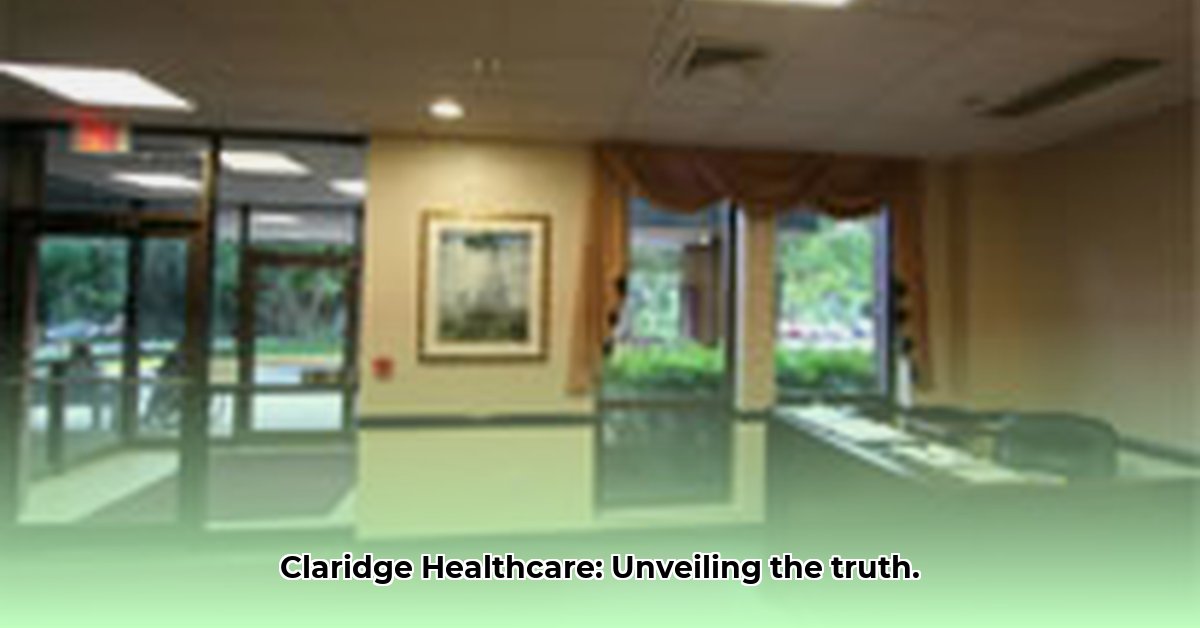
Claridge Healthcare, located in Lake Bluff, Illinois, presents a complex picture of quality of care. While demonstrating strengths in certain areas, significant improvements are needed in others to ensure resident safety and well-being. This report analyzes key performance indicators, identifies areas needing attention, and proposes actionable steps for improvement.
Positive Aspects: Claridge's Strengths
Claridge exhibits commendable performance in several key areas:
High Resident Self-Care: A remarkable 97.6% of residents manage their daily personal care with minimal assistance, exceeding both state (88%) and national (85.9%) averages. This indicates a supportive environment fostering resident independence and dignity.
Exceptional Flu Vaccination Rate: A 100% flu vaccination rate is significantly higher than state (91.6%) and national (94.8%) averages, demonstrating a strong commitment to preventative healthcare and resident well-being.
Consistent Weekend Staffing: Maintaining excellent staffing levels on weekends ensures consistent, high-quality care throughout the week, providing reassurance to residents and their families.
Low Emergency Room Utilization: With only 0.8 emergency room visits per 1,000 patient days, Claridge demonstrates effective on-site management of acute health issues, minimizing unnecessary hospitalizations. This suggests efficient care coordination and a strong response to health events.
Areas Needing Improvement: Challenges Facing Claridge
Despite its strengths, Claridge faces significant challenges requiring immediate attention:
Elevated Fall Injury Rate: A concerning 3.4% of residents experience major fall injuries, far exceeding state (1.1%) and national (1.0%) averages. This necessitates a comprehensive review and revision of fall prevention protocols.
Higher-Than-Average Infection Rate: The infection rate resulting in hospitalization (7.5%) is slightly above state (7.4%) and national (7%) averages. While the difference may seem minor, it still represents a significant number of residents requiring hospital care due to infections.
Insufficient Nurse Staffing: With 2 hours and 5 minutes of daily nursing care per resident, Claridge falls below state (3 hours 24 minutes) and national (3 hours 46 minutes) averages. Understaffing can compromise resident safety and the quality of care. This is likely a contributing factor to other challenges.
Substantial Financial Penalties: Accumulated fines totaling \$379,126 over three years indicate potential compliance issues that need immediate resolution. These penalties may indirectly affect the quality of care.
Claridge's Size and Rehabilitation Success
Claridge's large size (231 beds) may contribute to some of the challenges. Managing a facility of this scale presents logistical hurdles that demand careful consideration and resource allocation. Additionally, the rehabilitation success rate (43.7% of residents returning home) is below average, warranting further investigation to identify contributing factors and develop targeted interventions. Is this outcome directly related to the other factors, or is it a separate issue altogether?
Actionable Steps for Improvement
The following table outlines short-term and long-term actions for various stakeholders:
| Stakeholder | Short-Term Actions | Long-Term Actions |
|---|---|---|
| Claridge Management | Implement a comprehensive fall prevention program; strengthen infection control protocols; address nurse staffing deficiencies; conduct thorough compliance audits. | Invest in staff training and technology; enhance expertise through partnerships with external experts; establish a robust risk management system. |
| Regulatory Bodies | Increase monitoring frequency; thoroughly investigate the causes of high fine amounts; impose sanctions and encourage facility improvements. | Develop clearer guidelines for staffing ratios and fall prevention; strengthen oversight mechanisms, particularly for large facilities; promote transparency and accountability. |
| Patients & Families | Actively engage in care planning; openly communicate concerns; seek clarification on quality metrics. | Advocate for stronger patient rights; support regulatory initiatives; participate in surveys and feedback mechanisms. |
This report provides a balanced assessment of Claridge Healthcare. Open communication and collaborative efforts are crucial for implementing improvements and ensuring resident well-being.